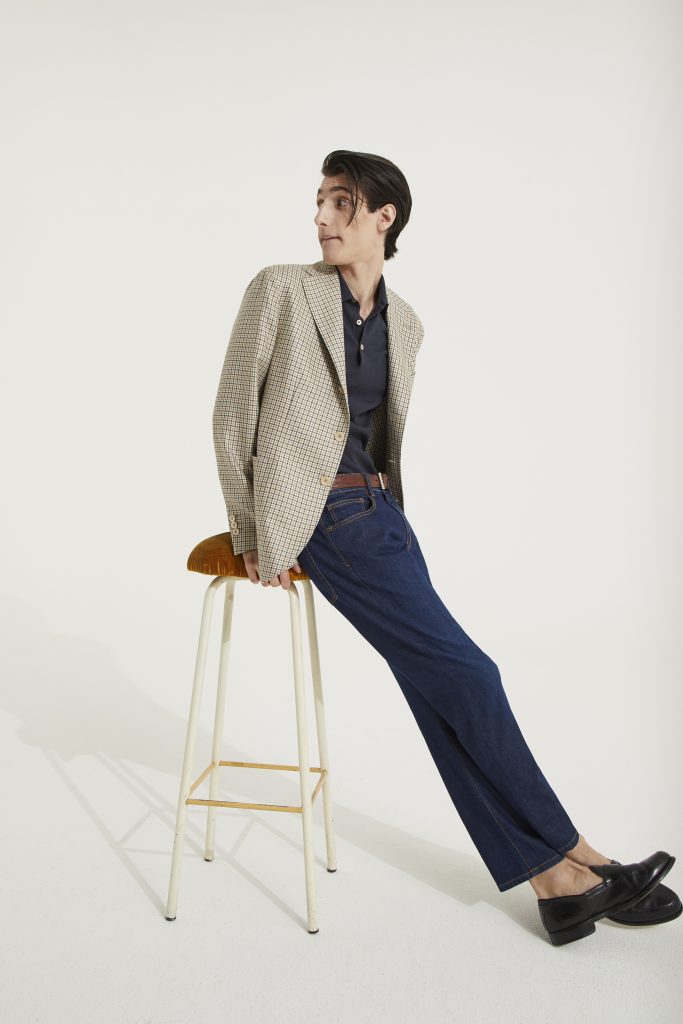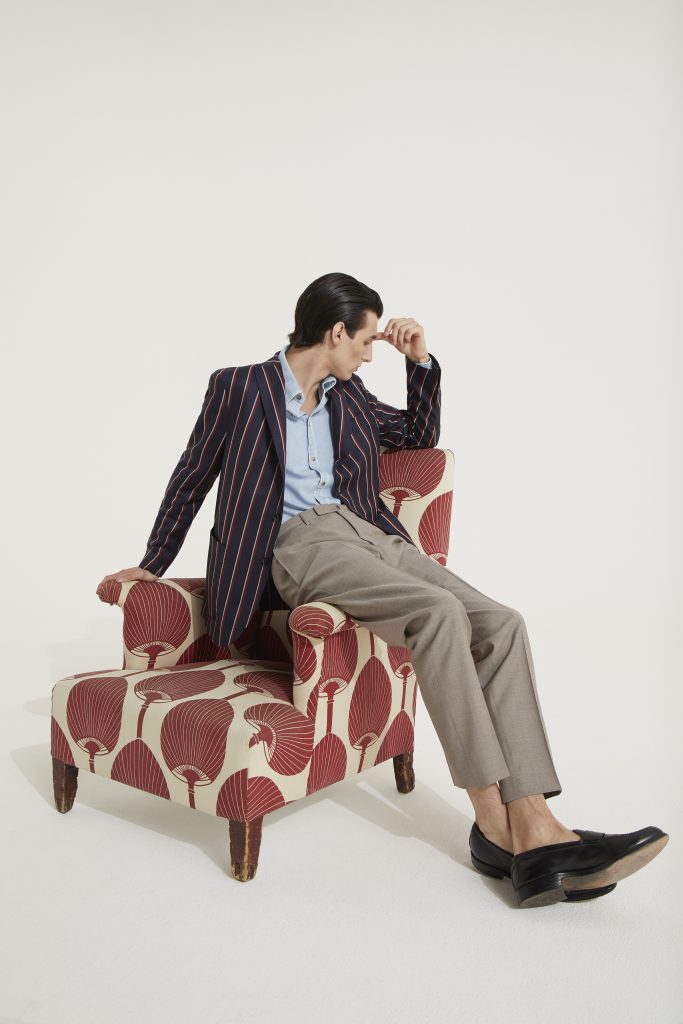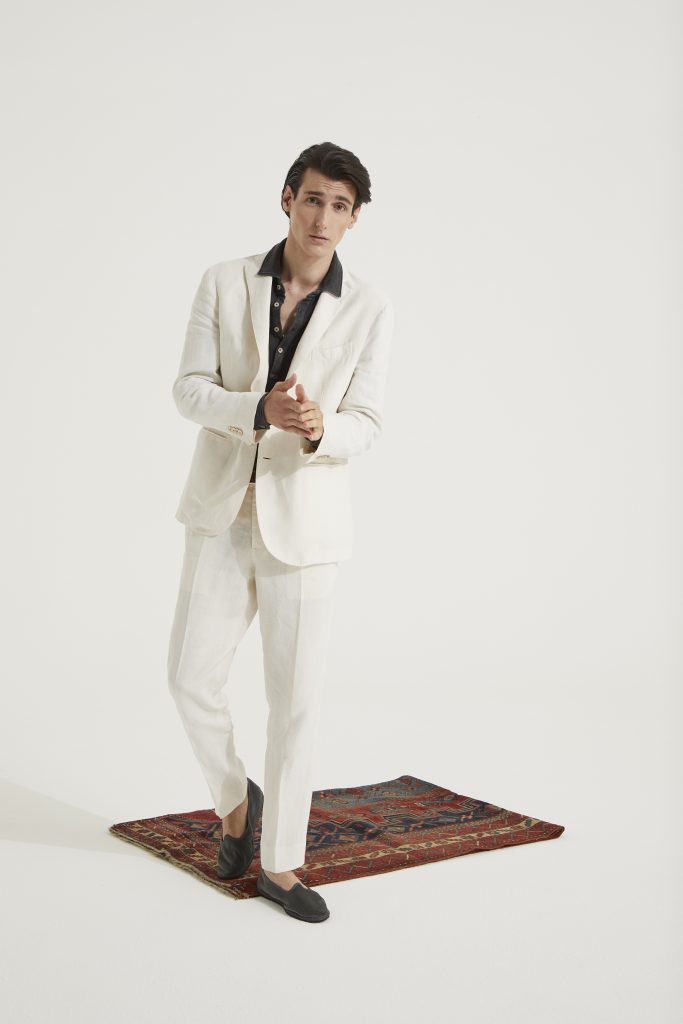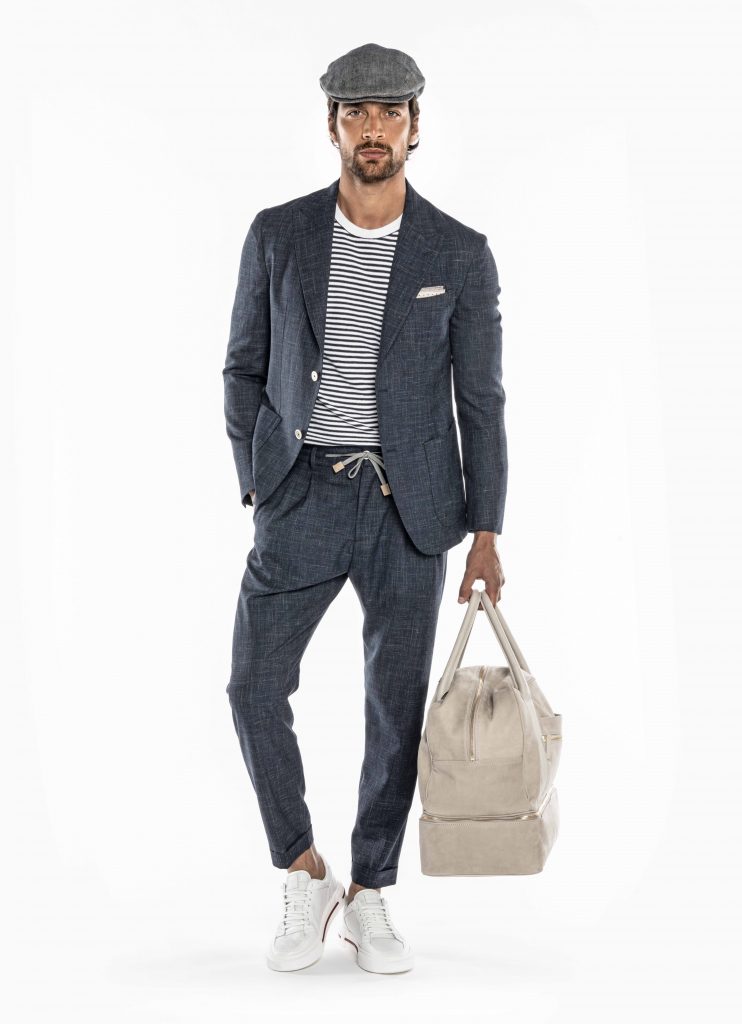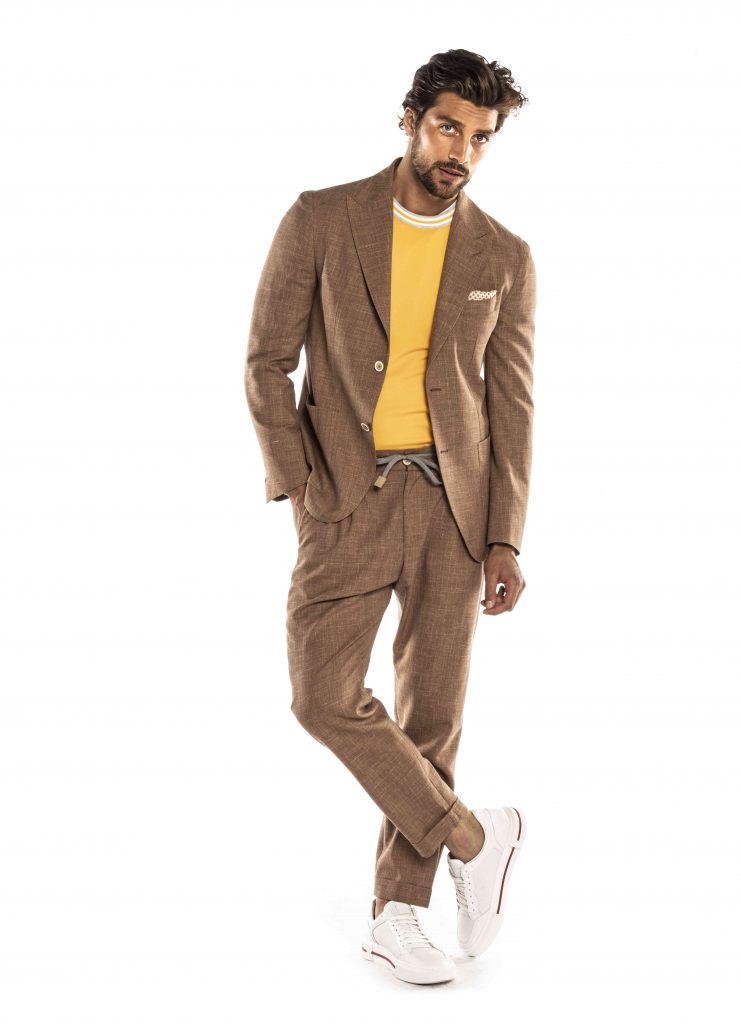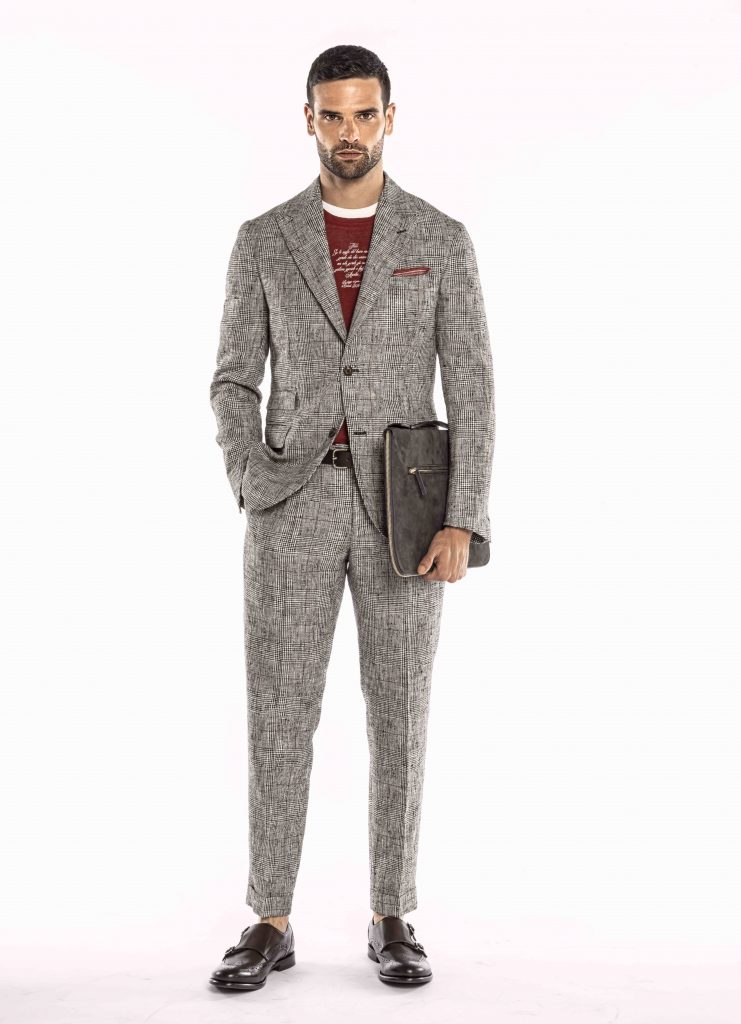TAILORED CLOTHING IS STILL STANDING

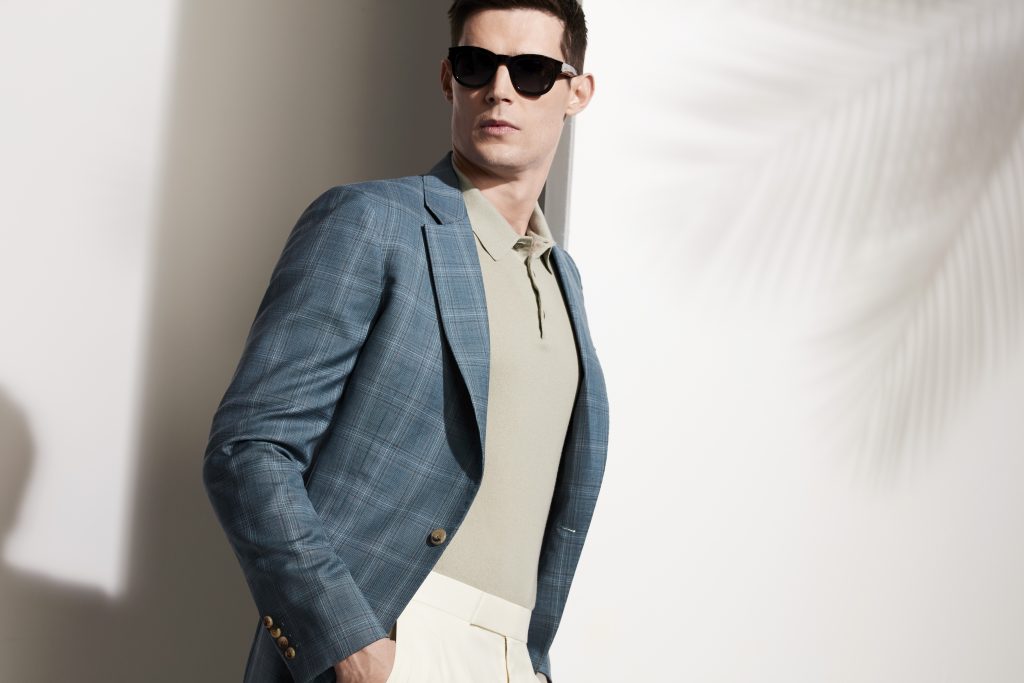
In early August, The Wall Street Journal’s Jacob Gallagher tweeted, “I have been leery of ‘the suit is really dead this time’ takes, but there’s no denying that three of the last big clothing retailers to declare bankruptcy—J. Crew, Brooks Brothers, and now Men’s Wearhouse—were all built (at least in part) on approachable men’s suiting.” He goes on to say that suits will always have a certain niche market, but that men who buy one suit for isolated occasions can’t sustain business for an entire industry. That’s a pretty big statement coming from a staffer of a newspaper whose financial industry readers defined the look of the post-war high-powered executive in a classic suit.
Like so many businesses, tailored clothing has been hit hard by the pandemic as consumers were forced to work from home, and opportunities to wear suits disappeared as fast as toilet paper inventories. Consider the numbers: In better specialty stores, tailored clothing for fall ‘20 is planned down about 50 percent, but retailers are hopeful that goods will be available if business picks up. While spring ‘21 plans look positive on paper (double the volume of a disastrous spring ‘20), this is still down about 25 percent from spring ‘19.
Still, even as we adjust to a new COVID-centric life, rumors of the suit’s demise seem once again greatly exaggerated.
TAILORED CLOTHING VS. SPORTSWEAR
As the world hunkered down, many consumers adopted sweats as their work uniform. For some, however, video conferencing apps like Zoom or Google Meet have inspired a vestige of professional attire.
At 155-year-old Kositchek’s, located in Lansing, Michigan one block from the state capital building, David Kositchek speaks candidly about business prospects. “Downtown is aching,” he confides. “There’s nobody down here. I hate to say it’s a ghost town, but the lawyers and lobbyists we used to depend on aren’t around. Still, we’ve been able to maintain some traffic, because we’re known in the area for tailored clothing; it’s always been our backbone. I feel it opening up: we’re selling a lot of soft sportcoats to wear with jeans.”
Frank Tatta of Jack & Jill Menswear in West Virginia feels fortunate that men are replenishing their sportswear wardrobes, adding of course that “I have to sell a dozen Peter Millar polos to make up for one suit.”

Sportswear has also been the lead category for Dana Katz at Miltons The Store for Men in Massachusetts. “Tailored clothing has always been an important part of our business, but the wear to work portion of it has gone away. The demand is now ancillary so we’ve adjusted our fall ’20 receipts and are looking for spring ’21.”
“Obviously, occasion-based dressing has been affected by recent events but our customer is still shopping in every category,” says Matthew Sebra, men’s fashion director at Macy’s. “We see less structured silhouettes and bold color as two key foundations to tailoring in spring ’21. Our customer might not have as many opportunities to wear tailored clothing as he did six months ago, but he hasn’t given up on wanting newness in this part of his wardrobe.”
We spoke to John Tighe shortly before his exit from Peerless. “When people get back to work there will be a resurgence of tailored clothing, because guys will want to dress up again, just as they did after the recession in 2008. It’s always about trend and countertrend. Men will want to look sharp. Stores are getting rid of old merchandise and are bringing in fresh fashion.”
OPPORTUNITIES
Jim Ockert of Khakis in Carmel remains focused on soft clothing like Boglioli and Eleventy. “We’re a resort town, so a lot of what we sell is pretty casual already. We’re showing soft coats with technical pants in five-pocket models. We spent the last year developing our own brand in Naples to present a clear identity for our Khakis’ sportcoat.” Ockert has been championing his store’s vision of tailored clothing with engaging Instagram TV posts.
“Looking forward, tailoring is not going away but it will have to adapt to meet the new expectations of the customer who wants something lighter-weight, less structured, and more relaxed without sacrificing any of the polish,” adds Sebra.
Boglioli
Tighe notes that before the pandemic, dress trousers were outperforming other categories. “But stretch has been moving into everything, so customers have new expectations of tailored clothing. We’ll see more soft performance fabrics and unconstructed garments. It’s a trend that makes a lot of sense for customers who want a more relaxed life. I also think that washable suits are going to take off as a reaction to COVID.”
Fred Derring from DLS notes that his better specialty store group stands to gain market share from recently-closed tailored chains and department stores. “Customers say ‘I’ve always wanted to shop here, but couldn’t afford it. I need a suit: can help me out with the price?’ Stores that stock well-made off-shore product that offers a higher margin are selling suits for $395 or $495 and still making money.”
Bruce Levitt from Mur-lee’s on Long Island is adamant about doubling down on tailored clothing. “It will be a challenge,” he admits, “but I’m sensing my customers want to dress up again, not for every day but for important meetings and special occasions. Yes, we’re selling a lot of shorts and t-shirts but I believe clothing stores need to remain clothing stores to stay in business. Attorneys and investment guys who love clothing want fresh new fashion merchandise, not boring basics. I plan to continue live communicating with my customers on Facebook and Instagram, playing up the fabulous clothing we’re bringing in for fall and spring.”
SPECIAL OCCASION DRESSING
Soft casual clothing has its place, but there’s no substitute for a great suit when it comes to wedding and funerals. As Katz says, “Not to make light of it, but recent clothing business reflects that movie Three Weddings and a Funeral. Events may be smaller, but people still want to dress for life’s special occasions.”
“Young people are still getting married,” agrees Kositcheck. “Men still come to us to get suits for weddings and funerals.”
Beyond life occasions, Macy’s is prepared for the holiday season. “The holiday party season could look very different this year but we don’t think people will abandon dressing up,” says Sebra. “In many cases, this will be their first opportunity to do so and we have them covered with festive plaids, rich velvet sportscoats, even some satin and shine.”
CUSTOM SOLUTIONS
“Off-the-rack suits are definitely not selling the way they used to,” says Derring. “The one bright spot is custom, which has kept our stores alive for ten years. It’s helped them survive, even in this pandemic. Many retailers reported that custom orders originally placed in January through March were delivered when stores reopened in June, providing a badly-needed infusion of cash. People who have big meetings and special occasions seem willing to spend a little more for something special. These days, they can get a domestic custom suit for $695 to $795 from places like Suitsupply, Indochino, or Atelier Munro.”
Many made-to-measure specialists are not unhappy with current business. Nick Hansen of Nicholas Joseph in Chicago says that while April and May were soft, now it’s like the pandemic never happened. “June was about even,” he says. “Even though people may have pushed off wedding plans, and there are fewer people in the wedding, clients still want the day to be special. If anything, we may be getting a bigger piece of the pie since people are not spending as much money on the wedding itself. The way they’re going to share the experience is through all those pictures, so there’s even more emphasis on looking great. We usually sell a suit or tux for the wedding day itself and another outfit for the rehearsal dinner. If it’s a gay wedding, it’s times two!”
Of course, even custom is being influenced by the quest for comfort. Says Gladson CEO Michael Solomon, “Even before Coronavirus, we had outstanding results with our new Flex Sport collection featuring Italian stretch wool and cotton. It makes a lot of sense for custom clothiers who are struggling to find less formal fabrics. Overall, clothiers today need to find new ways to pick up the slack from dwindling suit sales and performance fabrics seem to be the right fit.”
Eleventy
Hansen (a Gladson customer) is seeing lots of interest in five-pocket custom trousers in stretch materials, as well as custom polos with a vintage look. “We’ve been doing unstructured sportcoats for working from home or for socially-distanced dinners at the country club. People go out so rarely these days that when they do, they want to dress up like it’s a special occasion.”
Hansen is also fitting customers remotely. “We have a measurement app, and our staff has also gotten comfortable with doing fittings remotely. Now that everybody has embraced video conferencing, they’re less camera-shy. We can easily do tweaks to a garment with a virtual fitting.”
Says Steve Knorsch of Cad & The Dandy USA (another Gladson client), “We see a trend toward more separates: jacket and trouser combinations and shirts instead of more formal suits. For several years now, we’ve seen demand for softer fits, more natural and relaxed. But gentlemen still order special pieces for formal occasions – suits in limited edition fabrics, tuxedos, morning suits, even white tie for weddings and luxury outerwear in exclusive cloths and silhouettes. ‘Buy less but better’ is today’s mantra.”
BOTTOM LINE
While no one’s expecting business as usual for some time to come, there are clear opportunities to sell tailored clothing. Focus on styles that are soft, comfortable, less structured. Include a selection of “wow” sportcoats. Maintain a core of opening price suits from a vendor with a strong in-stock program. And remember that made-to-measure is a growing opportunity for stores to do more business with less inventory and virtually no markdowns.



